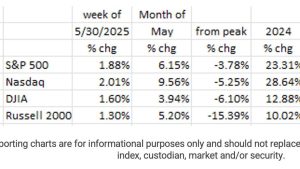This news report centers around a Western Australian teenager who was caught driving at an excessively high speed of 205 km/h on the Mitchell Freeway. The young driver’s justification for his reckless behavior, presented by his lawyer in court, was simply that he wanted to get home faster. This blatant disregard for road safety resulted in his apprehension by authorities, but he ultimately avoided imprisonment. While the specific details of the court’s decision are unavailable in this excerpt, the leniency of the sentence raises concerns about the adequacy of deterrents for such dangerous driving practices. The incident underscores a broader issue of reckless driving, particularly amongst younger drivers, and highlights the potential for tragic consequences associated with excessive speed.
The teenager’s actions demonstrate a worrying lack of awareness regarding the dangers of speeding. Driving at 205 km/h, more than double the speed limit on most freeways, significantly increases the risk of losing control of the vehicle. At such speeds, reaction times are drastically reduced, and the stopping distance becomes exponentially longer, making it nearly impossible to avoid collisions. Moreover, the impact force in a crash at this velocity is devastating, greatly increasing the likelihood of severe injuries or fatalities for the driver, passengers, and other road users. The teenager’s decision to prioritize saving a few minutes of travel time over the safety of himself and others reveals a concerning level of immaturity and disregard for the potential consequences.
The court’s decision to spare the teenager jail time, while allowing for other potential penalties like license suspension, fines, or community service, will undoubtedly spark debate about the effectiveness of the justice system in addressing dangerous driving. While rehabilitation and education should be considered, especially for young offenders, the leniency in this case raises questions about whether the punishment adequately reflects the severity of the offense. A stronger stance, possibly involving some form of incarceration, could have served as a more powerful deterrent not only for this individual but also for other potential speeders. It is crucial for the legal system to send a clear message that such reckless behavior will not be tolerated and that serious consequences will follow.
The incident highlights a pressing need for increased public awareness campaigns focusing on road safety, especially targeting young drivers. Educating novice drivers about the physics of speed, the potential consequences of collisions, and the importance of responsible driving habits is crucial. These campaigns should emphasize the devastating impact high-speed crashes can have not only on the individuals involved but also on their families and communities. Furthermore, promoting driver education programs that go beyond the basic requirements for obtaining a license could equip young drivers with the skills and knowledge necessary to make safe and responsible decisions behind the wheel.
Beyond educational initiatives, stricter enforcement of speed limits and harsher penalties for offenders could also play a significant role in curbing dangerous driving. Increased police presence on highways and the wider use of speed detection technologies could deter potential speeders. Furthermore, implementing graduated licensing systems that progressively grant young drivers more privileges as they gain experience and demonstrate responsible driving behavior could help mitigate risks. A comprehensive approach involving education, enforcement, and stricter penalties is necessary to combat the pervasive issue of speeding and create a safer road environment for everyone.
This case serves as a stark reminder of the dangers of speeding and the urgent need for a multifaceted approach to road safety. The teenager’s reckless decision to prioritize speed over safety, coupled with the court’s leniency, underscores the need for stricter enforcement of traffic laws, more effective educational campaigns, and a broader societal shift towards prioritizing responsible driving habits. Ultimately, creating a safer road environment requires a collective effort from individuals, communities, and the legal system to ensure that tragic consequences resulting from reckless driving are minimized. The focus should be on fostering a culture of responsible driving where safety is paramount and the risks associated with speeding are fully understood and appreciated.










